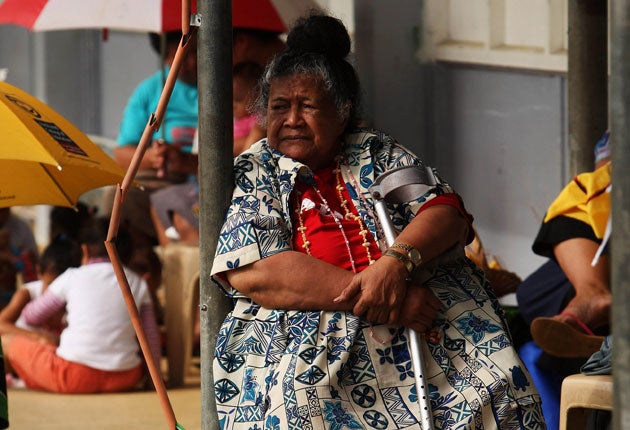Fat of the land: Nauru tops obesity league
Pacific islanders say they're just born to be big, but new UN figures show an explosion of chronic diseases linked to high-fat diet

Palm trees, ivory beaches and a languid lifestyle: to outsiders, the South Pacific lives up to its paradise image. But the islanders themselves are weighed down by problems – literally. The region has the world's highest obesity rates, along with associated chronic diseases.
According to the latest data from the World Health Organisation (WHO), Pacific island nations occupy the top seven places in the global obesity rankings. Diet is the main reason: people who once subsisted on fish, coconuts and root vegetables now eat imported processed foods that are high in sugar and fat.
The statistics are alarming. In Nauru, which tops the league table, 97 per cent of men and 93 per cent of women are overweight or obese. The region's diabetes rates are among the world's worst: 47 per cent in American Samoa, 44 per cent in Tokelau. Preventable conditions such as heart disease and cancer are responsible for three-quarters of deaths in this apparently carefree corner of the planet.
While the health figures are hard to dispute, some Pacific nations have questioned the obesity data, which is based on body mass index (BMI). People with a BMI of 25 and over are defined as overweight, those with 30 and over as obese.
A once prosperous island, thanks to its phosphate deposits, Nauru is unhappy at being labelled the fattest nation on earth. Nauruans say they are genetically short and stocky – which is why they have always excelled at weightlifting. The island's President, Marcus Stephen, won seven gold and five silver Commonwealth Games medals before he went into politics.
The director of public health, Setareki Vatucawaqa, questions whether BMI is a reliable way to measure obesity in non-Caucasians, saying that other factors – including ethnicity, sex and age – need to be considered. "They are using a set of rules ... across all cultures to define who is normal weight and who is overweight," he told the Australian Broadcasting Corporation.
While some health experts concede he has a point, the fact remains that people in Nauru – and the other top-ranked nations, the Cook Islands, Tonga, the Federated States of Micronesia, Palau, Niue and Samoa – carry unhealthy amounts of fat.
Poor nutrition, sedentary lifestyles and inadequate health education are not the sole factors. Clive Moore, a South Pacific expert at the University of Queensland, says that in Polynesian countries generous proportions are seen as a sign of prosperity. In the past, only chiefs achieved a large girth; nowadays, with higher incomes and Western diets, it has become far more common to be fat. "If you're fat, you're wealthy," says Professor Moore. "It's fairly common to eat huge meals in the Pacific. People might only eat once a day, but the plate could be 4ins high."
At the Pacific Food Summit in Vanuatu this year, Temo Waqanivalu, a senior WHO official, bemoaned the decline of traditional foods. "They are unable to compete with the glamour and flashiness of imported food," he said.
In Nauru, where three-quarters of islanders are defined as obese and 45 per cent of those aged 55-64 have diabetes, health authorities are trying to address the problem. Every Wednesday, locals are encouraged to walk around the three-mile airport perimeter. There are also regular exercise classes and sporting activities.
But it is proving difficult to wean people off processed foods such as tinned beef and mutton, which represent, to those who can afford them, a Western lifestyle. Then there is the volume problem. In Nauru, a popular snack is a whole fried chicken, washed down with a bucket-sized beaker of Coke.
The Pacific, of course, is not the only place where weight and preventable diseases are a big issue. Number eight in the WHO's league table is the United States, where more than 78 per cent of people are overweight or obese. In Britain, the figure is just over 61 per cent.
The islands, though, have the appearance of a health timebomb. Chen Ken, the WHO representative for the South Pacific, says: "We're now seeing extreme diabetes rates, and people ill and dying from diseases that were once uncommon in the Pacific." While the region is still a tropical paradise, he adds: "We want this to be the reality not just for the tourists who visit us, but also for the people who live here."
Subscribe to Independent Premium to bookmark this article
Want to bookmark your favourite articles and stories to read or reference later? Start your Independent Premium subscription today.

Join our commenting forum
Join thought-provoking conversations, follow other Independent readers and see their replies